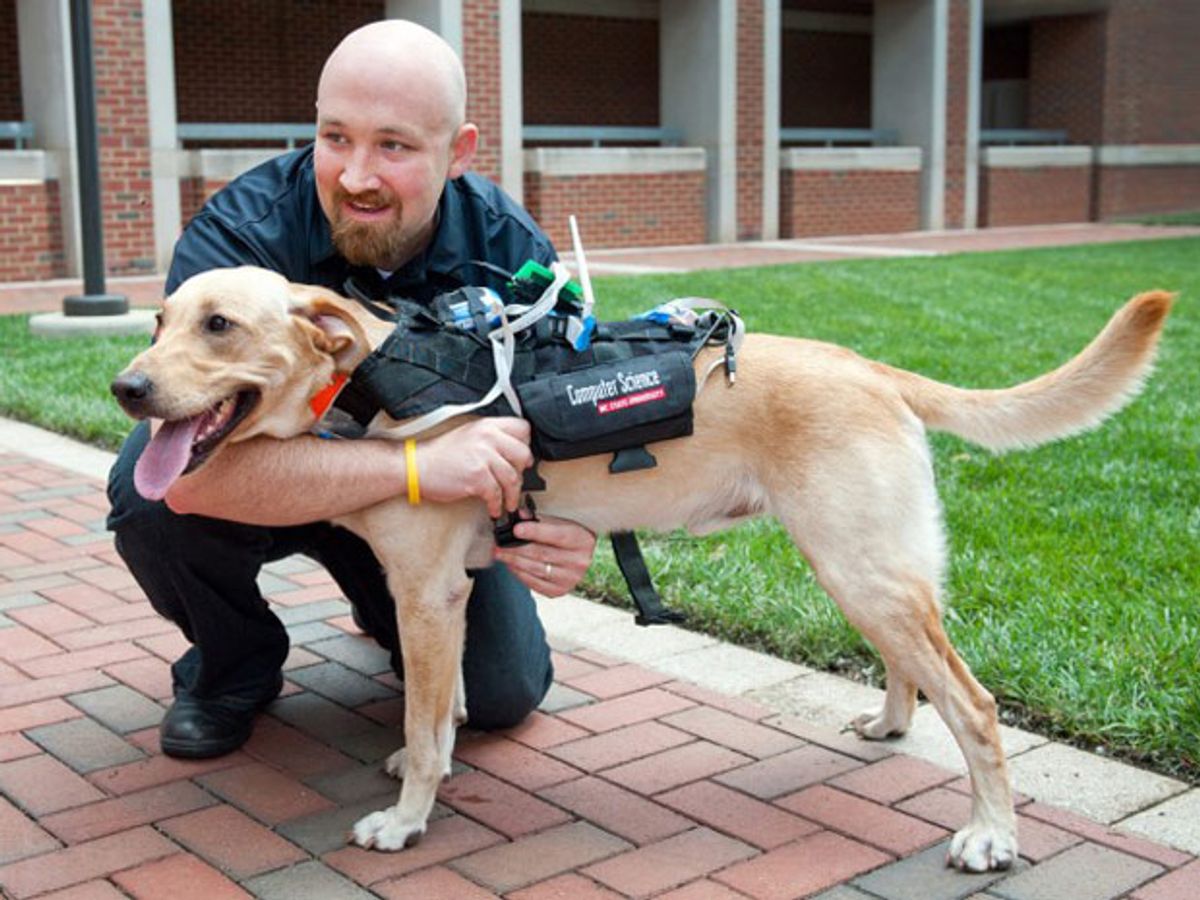Throughout history, dogs have learned to obey the hand signals and voice commands of people. Now a new two-way communication system could give man’s best friend a new way to talk back to his or her human handler.
The key to talking with Fido relies on a small computer and body sensors that work together to interpret a dog’s posture—a way to translate canine body language for humans to understand. On the other side, human handlers can communicate orders to their four-legged friends using vibrating motors in the dog’s haptic harness. Such a system may prove useful for guide dogs working with the blind, military working dogs, and dogs used for search and rescue.
“Dogs communicate primarily through body language, and one of our challenges was to develop sensors that tell us about their behavior by observing their posture remotely,” said David Roberts, a professor of computer science at North Carolina State University, in a press release. “So we can determine when they’re sitting, standing, running, etc., even when they’re out of sight—a harness-mounted computer the size of a deck of cards transmits those data wirelessly.”
The dog harness also has sensors capable of monitoring the dog’s heart rate, body temperature, and stress levels. Roberts and his colleagues have also tweaked the harness for rescue missions by adding a camera, microphone, and sensors for detecting gas leaks. They published their work in the journal IEEE Intelligent Systems.
Existing systems for communicating with dogs include devices tailored for military dogs working with soldiers or special forces units. The military dog “Cairo” that deployed alongside U.S. Navy SEALs to take down Osama Bin Laden wore tactical body armor made by Canada-based K9 Storm that included a speaker to relay the human handler’s vocal commands to the dog, according to Fast Company. But the “Cyber-Enhanced Working Dog” envisioned in the recent IEEE paper could boost human-dog cooperation to new heights with the help of compact, wearable electronics.
The growing use of robots for search and rescue during disasters—or as military assets on the battlefield—is providing humans with new companions capable of obeying exact commands without the interpretation issue. But dogs remain irreplaceable for certain tasks with their keen sense of smell, intelligence and mobility. Some dogs may even get their own robots that they deploy via bark control.
Jeremy Hsu has been working as a science and technology journalist in New York City since 2008. He has written on subjects as diverse as supercomputing and wearable electronics for IEEE Spectrum. When he’s not trying to wrap his head around the latest quantum computing news for Spectrum, he also contributes to a variety of publications such as Scientific American, Discover, Popular Science, and others. He is a graduate of New York University’s Science, Health & Environmental Reporting Program.



